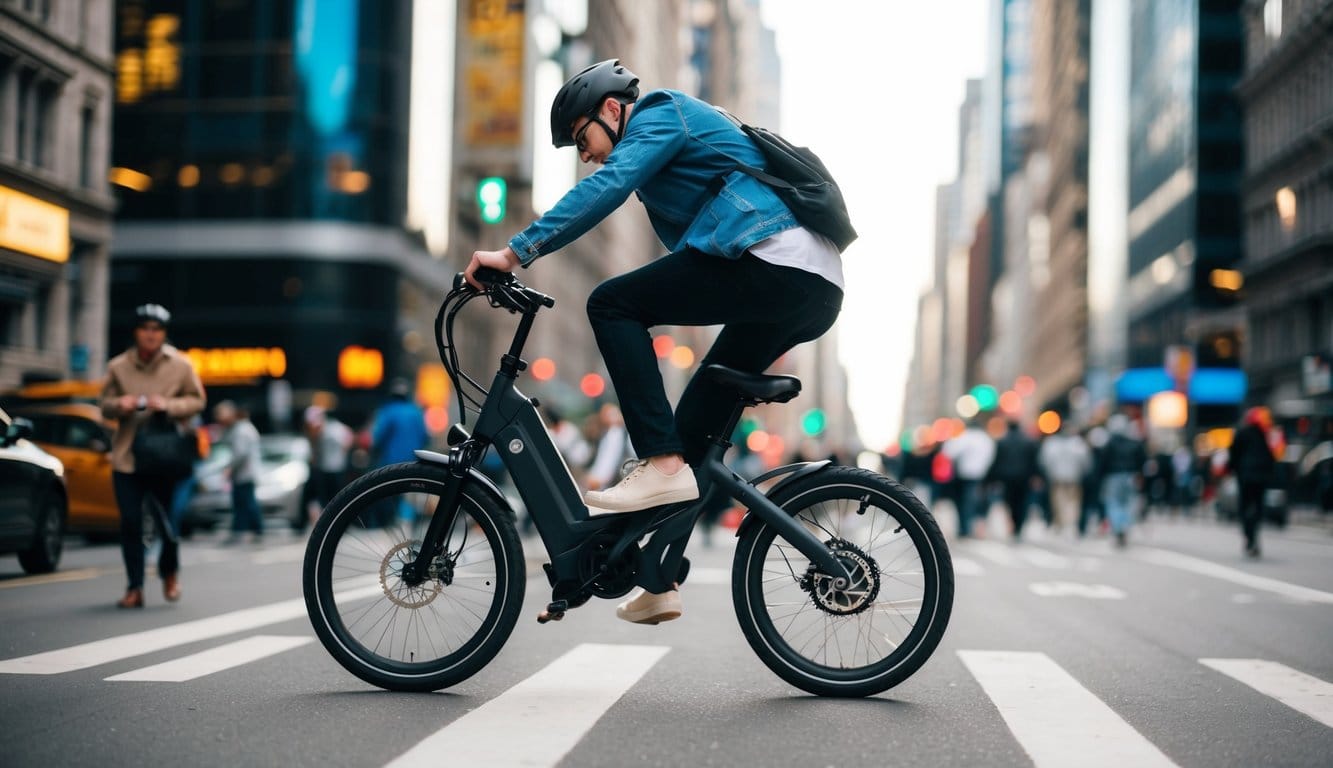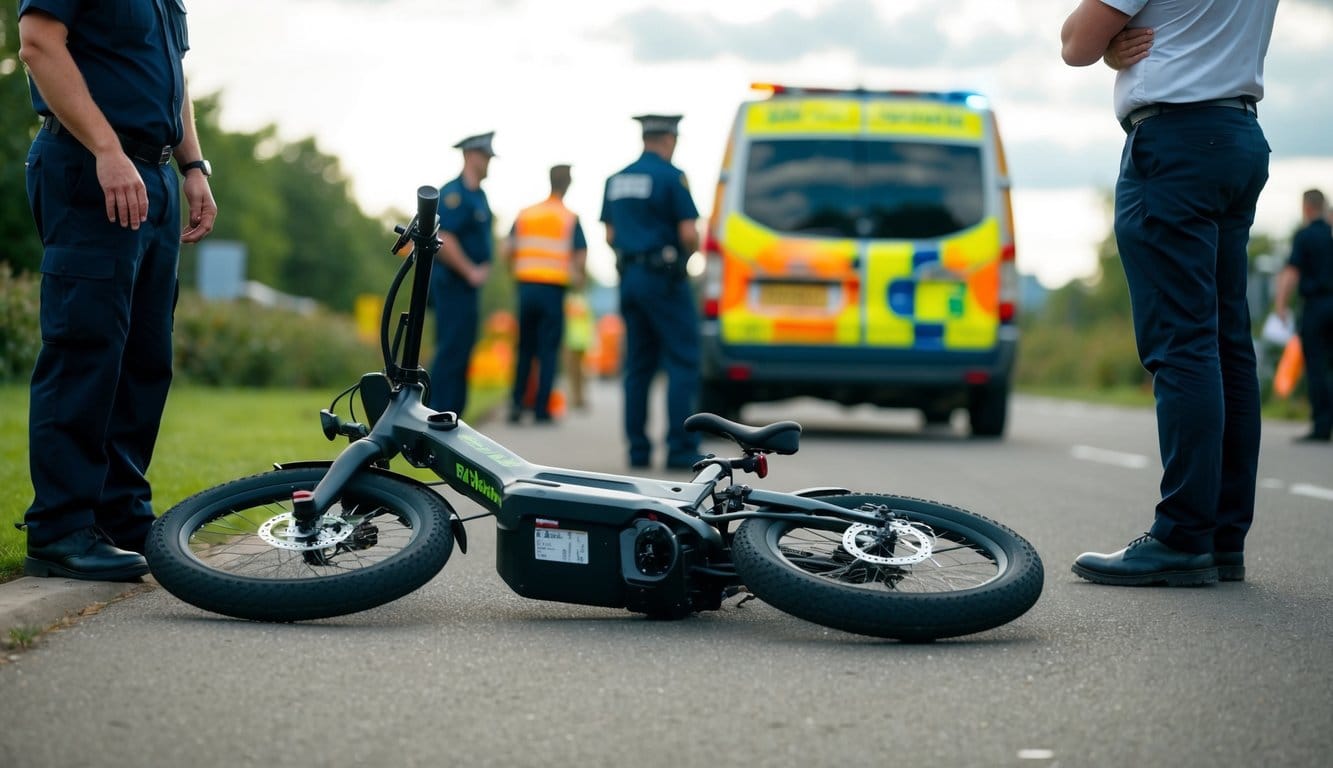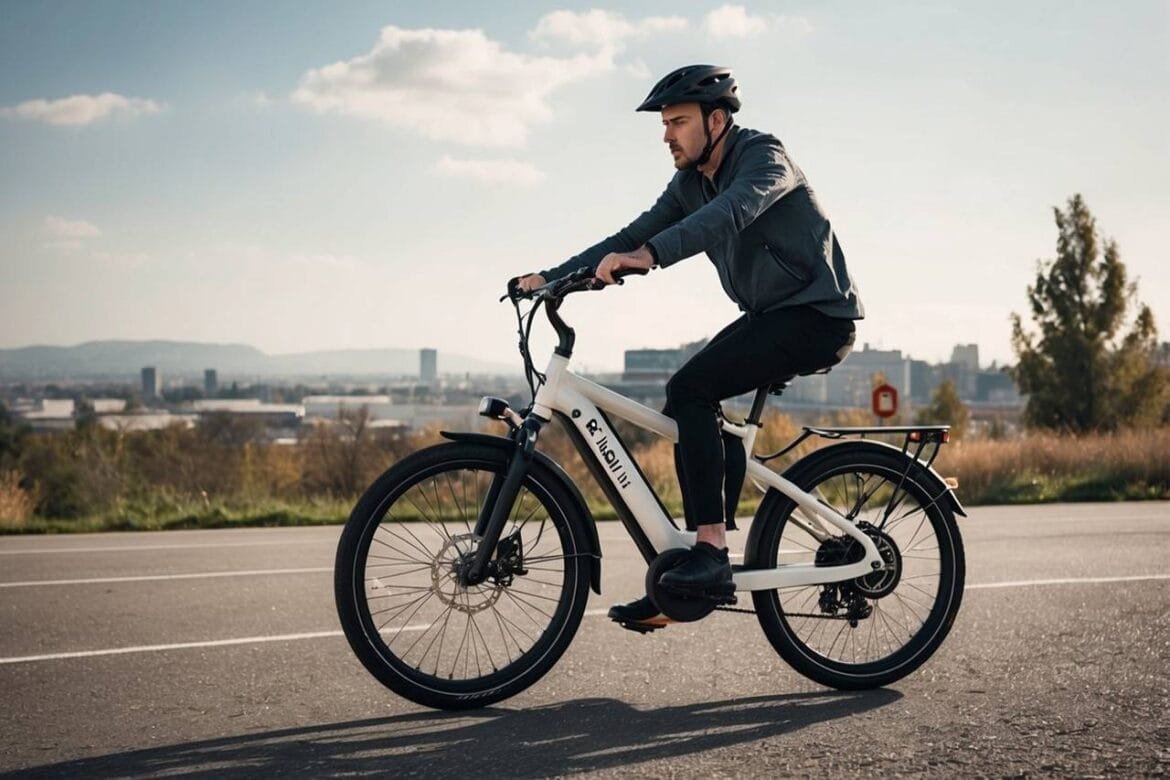Electric bikes, or e-bikes, are becoming more popular for commuters and leisure riders. They offer an exciting and eco-friendly way to get around. With more people using e-bikes, it’s important to ask: Are they safe? What are the risks involved in riding an electric bike?
E-bikes have been associated with a significant number of injuries, as hospitals reported treating 53,200 e-bike-related injuries from 2017 to 2022. These injuries have been rising, increasing from 3,500 in 2017 to 24,400 in 2022. It’s essential to understand the safety concerns to ensure a safer ride.
The article will explore various aspects of e-bike safety, including common injuries and tips to protect yourself while riding. It will also discuss the role of public health measures in keeping e-bike riders safe. Readers can expect practical advice and detailed guidance on how to enjoy e-biking responsibly.
The Rise of E-Bike Popularity
Electric bikes are zooming into the mainstream, bridging the gap between traditional bicycles and modern technology. They’re popular for their ease of use and environmental benefits. As these e-bikes become more prevalent, understanding their evolution and comparison to traditional bikes can help potential riders make informed decisions.
From Pedals to Batteries
E-bikes, or electric bicycles, have come a long way from simple pedal-powered rides. They have a small motor that provides extra power when pedaling. This helps riders travel farther with less effort. It’s like having a gentle breeze pushing you up a hill.
Electric bikes can reach higher speeds than their pedal-only counterparts. Most can go up to 20 to 28 mph, with some even faster. This makes them a great option for commuting and getting to destinations quickly.
Recent trends show a spike in e-bike sales, with people looking for eco-friendly transportation. Their popularity increased significantly during and after the pandemic, as more people sought alternatives to crowded public transport.
E-Bikes vs. Traditional Bicycles
E-bikes have a distinct advantage over traditional bicycles when it comes to convenience. They are perfect for people who travel long distances or have steep hills in their area. They offer a boost, letting riders sweat less and enjoy more.
However, they do have a few caveats. Electric bikes are heavier because of their motor and battery. This means carrying them upstairs or handling them in tight spots can be a workout in itself. Despite this, they open up biking to those who might not consider it otherwise.
Riders often debate e-bikes’ impact on fitness. While traditional bicycles offer more rigorous physical activity, e-bikes still require pedaling and provide a moderate workout. They’re a great middle ground for those wanting exercise without exhaustion. As reports suggest, their growing use also comes with increased safety concerns, so riders should stay aware on the road.
Understanding E-Bike Injuries
Electric bikes, or e-bikes, are becoming more popular, but they’re also linked to more hospital visits due to various injuries. Common injuries include head trauma and lower limb fractures, often requiring hospital treatment.
Common Types of Injuries
In e-bike accidents, some injuries happen more frequently than others. Fractures are common, especially in the lower limbs, because of falls or collisions. These can range from small fractures to more severe breaks needing significant medical treatment.
Micromobility injuries, not limited to e-bikes, often involve joint sprains and muscle strains. Riders may experience these when they try to regain control during sudden stops or turns. Another frequent injury is road rash, caused by skidding on pavement, which leads to skin abrasions and can be painful and prone to infection.
Head Injuries and Helmet Usage
Head injuries on e-bikes can be severe, often leading to concussions or even more serious traumatic brain injuries. This underscores the importance of wearing a helmet, which can greatly reduce the risk of head trauma.
While many e-bikers skip wearing helmets, those who do lower their chances of severe injury significantly. Studies show helmet safety standards are crucial in protecting riders. Bicycle helmets are designed to absorb impact, reducing the force transferred to the skull and brain. Helmet usage should be a top priority for all riders, ensuring they’re safe while enjoying their rides.
Safety Measures and Education
Safety is crucial for e-bike riders, and wearing helmets and increasing public awareness can make a difference. These strategies help reduce accidents and can save lives. Let’s take a closer look at the importance of helmet laws and how safety campaigns raise public awareness.
The Role of Helmet Laws
Helmet laws play a significant role in protecting e-bike riders. By making helmet use mandatory, these laws ensure that more people wear helmets, leading to fewer head injuries. In some areas, specific regulations require helmets meeting the NTA 8776 safety standard. This provides extra protection for those riding at high speeds. These helmets are available from reputable bike shops and online sellers.
Laws also motivate manufacturers to produce safer helmets. Innovations like Mips and KinetiCore are examples of technologies that reduce rotational impact. But helmet laws vary, which may confuse riders. Consistent rules across regions can clear up this confusion. It’s worth noting that helmet use alone is not enough. Riders should also follow other safety measures while riding their e-bikes.
Safety Campaigns and Public Awareness
Safety campaigns are essential for informing the public about e-bike safety. These campaigns use various methods like social media, community events, and advertisements to spread the word. By focusing on common accident causes, they offer tips that everyone can understand and follow. Campaigns also encourage people to wear helmets and follow traffic rules for their own safety and that of others.
Additionally, campaigns often collaborate with local organizations to reach more people. This approach helps deliver targeted messages to specific regions or demographics. For example, schools might host workshops to educate children on e-bike safety, emphasizing wearing helmets and being visible in traffic. Raising awareness through these initiatives makes roads safer for all riders.
Data Speaks: What the Numbers Say
When diving into e-bike injuries, the numbers tell an eye-opening story. From rising hospitalization rates to national statistics, the data paints a detailed picture of the challenges and trends in this area.
Hospitalization Trends
E-bike injuries frequently lead to hospital visits. According to a study by JAMA Surgery, nearly 12.5% of those involved in e-bike accidents needed hospital admissions. This shows that e-bike injuries can be quite serious. Many of these accidents result from collisions occurring mainly on streets, which involves more significant impact forces.
The high rate of hospitalizations also suggests that riders must prioritize wearing protective gear. Helmets and pads can significantly lower the risk of severe injuries. Data from the National Electronic Injury Surveillance System highlights that alcohol use is a factor in some of these accidents. It’s crucial for riders to avoid alcohol when planning to use an e-bike.
National and International Statistics
National and international data reveal a sobering trend. E-bike injuries in the U.S. have increased dramatically, with incidents jumping more than 3,000% over six years, as reported by Safety and Health Magazine.
Globally, the pattern is similar, as more people turn to e-bikes for their transport needs. The increase in popularity, however, also means a spike in related incidents. The U.S. Consumer Product Safety Commission (CPSC) monitors these trends and emphasizes the need for improved safety standards and public awareness.
Here’s a quick breakdown:
- Injuries in the U.S. increased over 3,000% from 2017-2022
- Alcohol is involved in some accidents
- Improved safety measures are essential
Understanding these statistics helps emphasize the need for public health interventions and rider safety education.
Influence of Substance Use on E-Bike Incidents

Substance misuse, including alcohol and drugs, significantly contributes to e-bike accidents. These substances impair judgement, making riders more prone to risky behaviors.
A Sobering Fact: Alcohol and Accidents
Alcohol consumption is a major factor in e-bike incidents. Nearly 2.5% of e-bike injuries involve alcohol use. This might seem like a small number, but consider the impact. Alcohol impairs balance and delays reaction times, crucial abilities when riding a bike.
Effects of Alcohol:
- Slowed reaction time
- Impaired decision-making
- Reduced coordination
These effects increase the likelihood of accidents, making sober riding crucial for safety.
The Impact of Drugs on Riding Safely
Drugs, though less mentioned, also play a role. Substance use is linked to under 1% of e-bike injuries, but their impact cannot be underestimated. Drugs can alter perception and create false confidence, prompting risky actions on the road.
Common Effects:
- Distorted perception
- Increased risk-taking
- Delayed response times
Riding under the influence of drugs elevates accident risks, emphasizing the need for awareness and precaution.
Infrastructure and E-Bike Safety
Many cities are grappling with the rise of e-bike usage. Efficient road design and clear rules can enhance safety significantly. Inadequate infrastructure and unclear laws often lead to accidents, so improving these areas is key.
Urban Jungle: E-Bikes in the City
Cities can be hectic, making e-biking challenging. Urban design needs to consider micromobility. Congestion, pedestrian traffic, and a lack of safe routes can put e-bikers at risk. Adding more bike lanes is one solution.
Pros of Urban E-Bike Lanes:
- Reduced travel time
- Fewer accidents
Remember, just painting lanes isn’t enough; dedicated pathways separated from roads by barriers are better. For example, Amsterdam’s cycling routes keep riders safe, reducing accidents remarkably. Urban areas must adapt to support the growing number of e-bike riders.
On the Road: Bike Lanes and Rules
Bike lanes are crucial for safety. They provide dedicated space, reducing conflicts with cars. Some laws require e-bikes to use these lanes where available, increasing protection for riders.
Key Road Rules for E-Bikes:
- Wear helmets: Though often debated, most safety studies endorse helmet use.
- Follow traffic signs: E-bikes should obey all road signals like cars do.
- Stay in designated lanes: Using bike lanes ensures riders stay out of car traffic.
Infrastructure investments like wider lanes and better signage can help control traffic flow and prevent accidents. In places with strong regulations and clearly marked bike lanes, e-bike safety improves significantly.
Technical Aspects of E-Bikes
E-bikes are fascinating machines. They include powerful batteries and are usually heavier than traditional bikes. These factors impact their speed, stability, and usability in different environments.
Batteries and Balance
E-bikes come equipped with lithium-ion batteries. These batteries supply significant power to the motors, allowing e-bikes to reach higher speeds than regular bicycles. They’re crucial for balancing the weight and energy distribution of the bike.
Managing battery health ensures efficiency and longevity. Keeping batteries charged yet not overcharging them can help maintain balance during rides. Stronger batteries also mean longer rides and less need for frequent charging stops. E-bikes with well-maintained batteries are handy, making them a popular choice in urban environments. Balance and battery health are closely linked, affecting ride safety and performance.
However, the placement of these batteries can influence the e-bike’s stability. Mounting them centrally helps maintain a low center of gravity. This design is crucial for handling both smooth streets and bumpy terrains encountered by e-bikers.
Weighty Matters: Heavier Than They Look
E-bikes are notably heavier than regular bicycles. The motor and battery add extra pounds, impacting how e-bikes feel while riding. This weight difference can affect speed and maneuverability, so riders should be aware.
Heavier e-bikes may require more strength to handle, especially when maneuvering through traffic or when transporting them. While the added weight contributes to enhanced stability at higher speeds, it can also make carrying or storing the bike more challenging.
On the positive side, extra weight can aid in stability, helping riders feel grounded, especially on fast-paced, flat routes. When combined with other micromobility devices, such as hoverboards, e-bikes stand out for providing a steady, fast, and reliable ride.
Consumer Information & Protection

E-bike injuries have been on the rise, leading to increasing concern about consumer safety. Knowing how to handle safety recalls and compliance standards is essential for staying protected while riding e-bikes.
Making Sense of Safety Recalls
Safety recalls happen when a product is found to have a defect that could cause harm. For e-bikes, recalls are important because they ensure that riders are not using potentially dangerous equipment. The Consumer Product Safety Commission (CPSC) often handles these recalls. It’s crucial for consumers to stay updated, so they can fix or return recalled e-bikes.
Keeping an eye on news and government websites can help. Manufacturers usually provide instructions on how to handle the recall. Ignoring recalls is risky and may lead to accidents.
Here are some ways to stay informed:
- Sign up for recall alerts.
- Follow your bike manufacturer’s website.
- Check the CPSC website regularly.
Understanding how recalls work can keep you safe and save you from a trip to the emergency room.
Certified for Safety: Standards and Compliance
E-bikes must meet safety standards to ensure they are safe for consumers. These standards guarantee the bikes are tested and meet certain criteria before hitting the market. Look for certification labels on the e-bike, which often show compliance with safety standards.
The CPSC plays a big role in setting these standards, which cover various aspects like electrical systems and structural integrity. When buying an e-bike, make sure it is certified for safety. This information is usually found in product descriptions or labeling.
Knowing your e-bike complies with these standards can give you peace of mind and confidence in its safety. Checking compliance is a proactive way to ensure that your ride is secure and minimizes the chance of emergency department visits.
Frequently Asked Questions

Electric bicycles are gaining popularity, and with that comes an uptick in accidents related to them. Riders face risks, including injuries, rising numbers of incidents, and dealing with hospital visits. Safety gear is crucial for protection.
What tops the chart of most common e-bike accidents?
Most accidents occur in urban areas where traffic is dense. Collisions with vehicles and falls due to high speed generally lead the pack. Urban cyclists should take extra caution in busy areas.
Can you pedal out the numbers on e-bike injury rates?
The rate of e-bike injuries is climbing. In recent years, studies show a significant rise in treatable incidents (see study). An increasing number of riders means more accidents, too.
- Pedestrian-related: 15%
- Injuries from falls: 55%
- Collisions with vehicles: 30%
Are e-bikes leading the pack in injury-causing rides?
While traditional bicycles still cause more injuries, e-bikes aren’t far behind. They offer higher speeds, leading to a greater chance of falls and serious bruises. It’s essential to ride responsibly to avoid becoming a statistic.
What’s the rundown on yearly electric scooter wipeouts?
Electric scooters, too, contribute significantly to hospital visits. E-bike accidents show a steady rate at hospitals, comprising about a third of all related emergency cases in urban centers. Riders must gear up for safety to help these numbers decline.
How are hospitals keeping pace with e-bike boo-boos?
Hospitals are seeing an uptick in cases due to e-bike accidents. Medical teams are prepared with specialized care for typical injuries like fractures and sprains. With rapid handling and treatment, they ensure quick recovery for e-riders.
What safety gear can help me avoid joining e-bike injury statistics?
Safety gear is your best bet against injuries. Helmets, reflective gear, and gloves can drastically reduce risk. A few essentials:
- Helmet: Shields your noggin.
- Reflective Clothing: To be seen!
- Padded Gloves: Enhance grip and protect palms.
Suit up wisely to stay safe.
